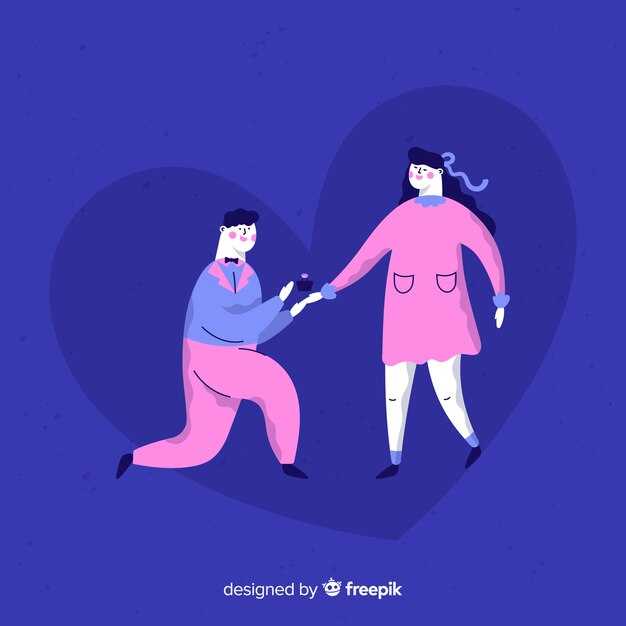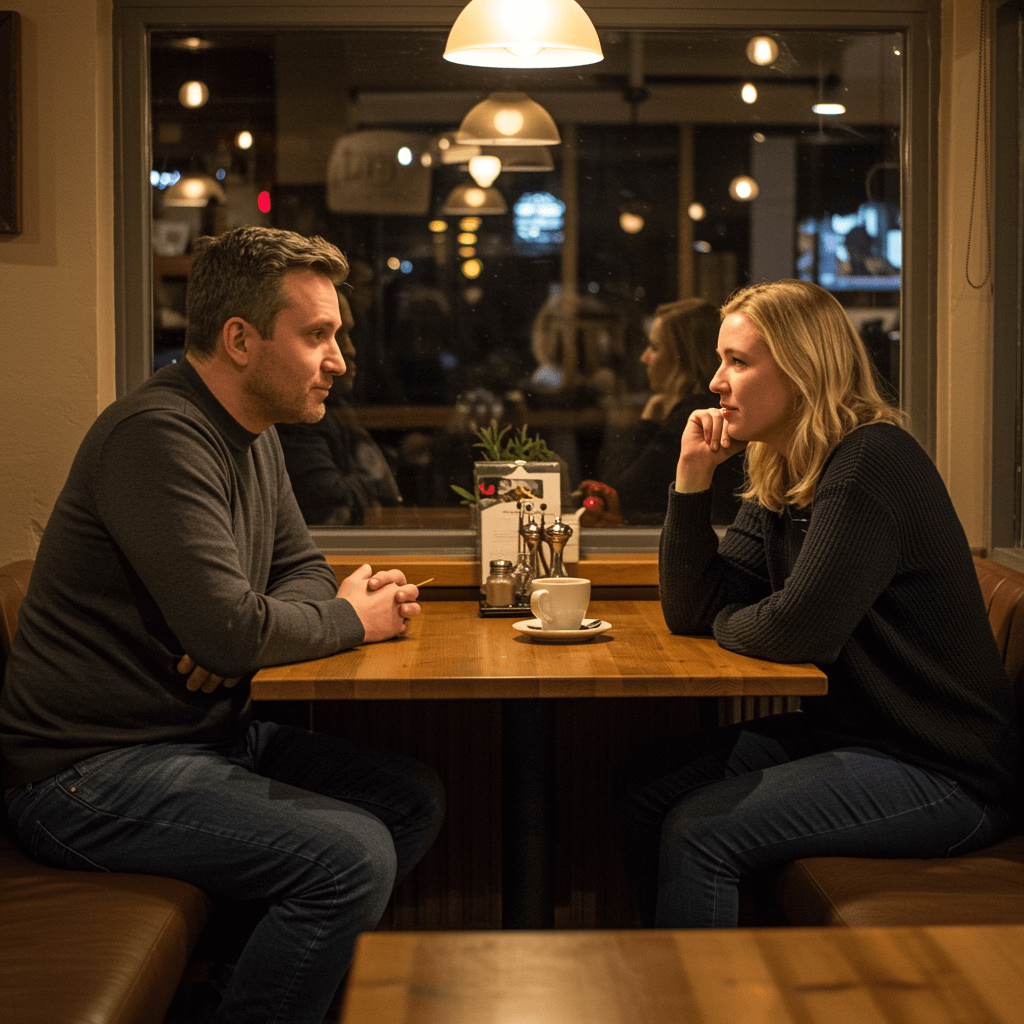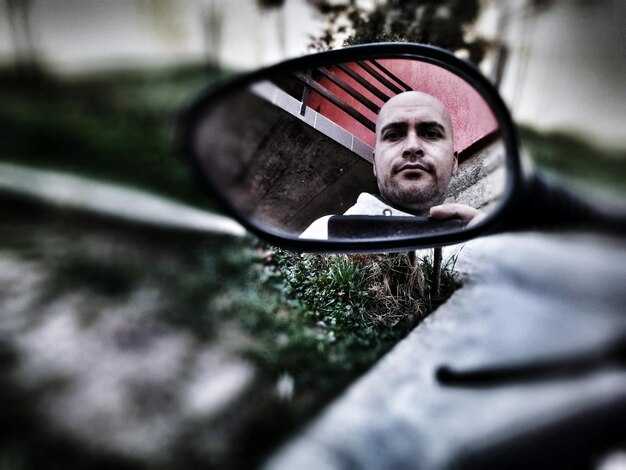Imagine meeting someone genuinely kind, who’s emotionally available and treats you with respect. You’d think that would spark something, right? Yet sometimes you feel nothing — a numbness takes over. Sound familiar? Instead of leaning in, irritation rises and you pull away. A part of you insists you want authentic love, so why does the wrong person feel magnetic while the right one leaves you cold? If your childhood was marked by inconsistent, conditional, or absent love, then stable intimacy can seem alien. This isn’t deliberate self-destruction, and it isn’t a curse. What feels attractive to you — what makes your heart race — can be a learned response, a trauma-driven pattern forged in chaos. That history wires you to be drawn to unpredictability: mixed signals, emotional unavailability, and distance. When someone treats you with care, it may register as unfamiliar or even empty, not because they are unworthy, but because they don’t trigger the adrenaline rush tied to the fear that they’ll abandon you at any moment. This phenomenon is what’s often called the eroticization of abandonment. It’s especially common among people — often women — whose primary caregivers were neglectful or inconsistent, since our earliest attachments shape what later feels desirable. If a parent’s affection was absent or unstable, the modern-day sensation of “love might not last” can feel intoxicating, because it mirrors that old rescue narrative: the brief, intense relief of almost being seen. That response isn’t logical or healthy, and it isn’t your fault. Fortunately, it can be changed. Here’s how. When early love arrived wrapped in rejection, absence, or yearning, it conditioned a pattern of intense longing and loneliness that distorts what feels “real.” So a partner who is steady and kind can feel strange, awkward, or flat — you might notice no emotional response. Conversely, someone who keeps you guessing, withdraws, or makes you beg for attention triggers a familiar surge that mimics the old chemistry of being rescued from solitude. It’s not that you don’t want a stable relationship; it’s that the only relationships that once made sense were those where love was uncertain. The pull toward damaging romances can be healed. If love only seems valid when it hurts, recognize this reaches beyond hookups and dating — it shapes energy, trust, self-worth, and your future. Shifting what you find attractive is not a quick fix or a simple change in mindset. It’s a humbling, gradual process of disentangling an attachment to pain and craving that likely formed before words existed for it. If this resonates and you suspect childhood wounds influence your romantic patterns, a free quiz outlining common signs of childhood experiences limiting adult relationships is available; a link to that quiz is located in the first row of the description beneath this video. The first steps toward healing will ask a lot of you. One, take a pause from dating for a period. Not as a manipulative strategy, not to make someone care more, but to allow the inner noise to settle. This kind of stillness weakens the reflex that pulls you toward turmoil. It can feel like withdrawal at first, but without that interruption, the draw to chaos keeps rerouting you back to the same choices. Number two, review your past relationships honestly — every one of them — and confront the reality, not what you wished they were. Ask yourself: Did that person actually love you? Were you truly close? Or were you stuck in patterns of waiting to be chosen, trying to earn affection, or silencing yourself to avoid pushing them away? This reckoning is painful, yet clarifying; it dissolves the spell where confusion masquerades as love. Number three, get outside perspective from someone who can reflect what you can’t easily see. Trauma skews perception: distance becomes “space,” coldness becomes “mystery,” and tolerance becomes endurance. A mentor, coach, or trusted peer group working on the same issues can’t rescue you, but they can mirror what’s real, which is crucial when the pattern feels normal. Number four, clear out relationships that keep you stuck. End lingering friendships with exes, stop tolerating casual situations that leave you hollow, and remove people who don’t truly want you. Holding onto someone you don’t genuinely want — or who doesn’t want you — means you aren’t emotionally available, and a healthy partner will sense that. Number five, cultivate connection outside of romance: build real friendships, engage in frank conversations, and surround yourself with people who care for you because you show up, not because they have to chase you. This foundation creates space for a different kind of love and helps you recognize goodness when it’s present instead of dismissing it for not fitting the old fantasy. Let go of the idea that one person will complete you — that’s dependency, not love — and it explains why perfectly good partners often feel insufficient: they can’t compete with the long-held fantasy you’ve clung to. There is structured help available in an online course about healing trauma-driven dating patterns; a link to that course is placed on the second line of the description below this video. Genuine connection isn’t a dramatic rescue; it’s cultivated gradually, once the mind is clearer, the heart is more open, and space is made for something different. When attraction is shaped by abandonment, the whole nervous system stays hypervigilant, scanning others not for how they love you but for how likely they are to leave. That’s more than fear of rejection — it can feel like an unconscious hunt for rejection because it revives the old chemistry, and paradoxically it can feel safer than being fully emotionally available. Beneath that lies emotional dysregulation: even when a healthy partner arrives, staying present can be difficult. Panic, reactivity, lashing out, withdrawing, and blaming are common responses that sabotage connection. This pattern frequently appears in people raised with abuse or neglect, since chronic stress can dysregulate the nervous system. Relationships are inherently stressful, so if emotions erupt too intensely, or stay too flat when feelings are warranted, emotional dysregulation may be at play — and it can be healed. Learning skills to soothe and regulate the nervous system is essential, and this channel offers tools for that work. Being able to connect, to be emotionally available, and to regain regulation is possible now, but it requires more than self-help reading or effort alone: it demands honesty, raised standards, time, and practice. Healthy love might feel uneventful at first — too calm, too easy, or awkward — but it deepens not by chasing excitement, but by healing the old attraction to drama, fear, and depletion. Letting go of tumultuous partners brings a phase of quiet reflection and the establishment of healthy rhythms. That stillness allows emotions to return gradually, like a well slowly refilling. Surround yourself with steady, kind people — especially those committed to their own growth — because they support the rewiring of instincts and help the heart open genuinely. That’s how the pull toward pain fades and you stop mistaking it for love. Stop pulling away from what you say you want. It’s common to believe the missing piece is the right person, but that change only happens when you become someone who recognizes goodness, finds it attractive, and believes it’s possible. If this message resonates, there’s another video you may find helpful right here. See you soon. Does the fear of abandonment or loneliness keep you trapped in harmful relationships, staying far beyond the point you wanted to leave because the idea of leaving felt unbearable? [Music]
![Imagine meeting someone genuinely kind, who’s emotionally available and treats you with respect. You’d think that would spark something, right? Yet sometimes you feel nothing — a numbness takes over. Sound familiar? Instead of leaning in, irritation rises and you pull away. A part of you insists you want authentic love, so why does the wrong person feel magnetic while the right one leaves you cold? If your childhood was marked by inconsistent, conditional, or absent love, then stable intimacy can seem alien. This isn’t deliberate self-destruction, and it isn’t a curse. What feels attractive to you — what makes your heart race — can be a learned response, a trauma-driven pattern forged in chaos. That history wires you to be drawn to unpredictability: mixed signals, emotional unavailability, and distance. When someone treats you with care, it may register as unfamiliar or even empty, not because they are unworthy, but because they don’t trigger the adrenaline rush tied to the fear that they’ll abandon you at any moment. This phenomenon is what’s often called the eroticization of abandonment. It’s especially common among people — often women — whose primary caregivers were neglectful or inconsistent, since our earliest attachments shape what later feels desirable. If a parent’s affection was absent or unstable, the modern-day sensation of “love might not last” can feel intoxicating, because it mirrors that old rescue narrative: the brief, intense relief of almost being seen. That response isn’t logical or healthy, and it isn’t your fault. Fortunately, it can be changed. Here’s how. When early love arrived wrapped in rejection, absence, or yearning, it conditioned a pattern of intense longing and loneliness that distorts what feels “real.” So a partner who is steady and kind can feel strange, awkward, or flat — you might notice no emotional response. Conversely, someone who keeps you guessing, withdraws, or makes you beg for attention triggers a familiar surge that mimics the old chemistry of being rescued from solitude. It’s not that you don’t want a stable relationship; it’s that the only relationships that once made sense were those where love was uncertain. The pull toward damaging romances can be healed. If love only seems valid when it hurts, recognize this reaches beyond hookups and dating — it shapes energy, trust, self-worth, and your future. Shifting what you find attractive is not a quick fix or a simple change in mindset. It’s a humbling, gradual process of disentangling an attachment to pain and craving that likely formed before words existed for it. If this resonates and you suspect childhood wounds influence your romantic patterns, a free quiz outlining common signs of childhood experiences limiting adult relationships is available; a link to that quiz is located in the first row of the description beneath this video. The first steps toward healing will ask a lot of you. One, take a pause from dating for a period. Not as a manipulative strategy, not to make someone care more, but to allow the inner noise to settle. This kind of stillness weakens the reflex that pulls you toward turmoil. It can feel like withdrawal at first, but without that interruption, the draw to chaos keeps rerouting you back to the same choices. Number two, review your past relationships honestly — every one of them — and confront the reality, not what you wished they were. Ask yourself: Did that person actually love you? Were you truly close? Or were you stuck in patterns of waiting to be chosen, trying to earn affection, or silencing yourself to avoid pushing them away? This reckoning is painful, yet clarifying; it dissolves the spell where confusion masquerades as love. Number three, get outside perspective from someone who can reflect what you can’t easily see. Trauma skews perception: distance becomes “space,” coldness becomes “mystery,” and tolerance becomes endurance. A mentor, coach, or trusted peer group working on the same issues can’t rescue you, but they can mirror what’s real, which is crucial when the pattern feels normal. Number four, clear out relationships that keep you stuck. End lingering friendships with exes, stop tolerating casual situations that leave you hollow, and remove people who don’t truly want you. Holding onto someone you don’t genuinely want — or who doesn’t want you — means you aren’t emotionally available, and a healthy partner will sense that. Number five, cultivate connection outside of romance: build real friendships, engage in frank conversations, and surround yourself with people who care for you because you show up, not because they have to chase you. This foundation creates space for a different kind of love and helps you recognize goodness when it’s present instead of dismissing it for not fitting the old fantasy. Let go of the idea that one person will complete you — that’s dependency, not love — and it explains why perfectly good partners often feel insufficient: they can’t compete with the long-held fantasy you’ve clung to. There is structured help available in an online course about healing trauma-driven dating patterns; a link to that course is placed on the second line of the description below this video. Genuine connection isn’t a dramatic rescue; it’s cultivated gradually, once the mind is clearer, the heart is more open, and space is made for something different. When attraction is shaped by abandonment, the whole nervous system stays hypervigilant, scanning others not for how they love you but for how likely they are to leave. That’s more than fear of rejection — it can feel like an unconscious hunt for rejection because it revives the old chemistry, and paradoxically it can feel safer than being fully emotionally available. Beneath that lies emotional dysregulation: even when a healthy partner arrives, staying present can be difficult. Panic, reactivity, lashing out, withdrawing, and blaming are common responses that sabotage connection. This pattern frequently appears in people raised with abuse or neglect, since chronic stress can dysregulate the nervous system. Relationships are inherently stressful, so if emotions erupt too intensely, or stay too flat when feelings are warranted, emotional dysregulation may be at play — and it can be healed. Learning skills to soothe and regulate the nervous system is essential, and this channel offers tools for that work. Being able to connect, to be emotionally available, and to regain regulation is possible now, but it requires more than self-help reading or effort alone: it demands honesty, raised standards, time, and practice. Healthy love might feel uneventful at first — too calm, too easy, or awkward — but it deepens not by chasing excitement, but by healing the old attraction to drama, fear, and depletion. Letting go of tumultuous partners brings a phase of quiet reflection and the establishment of healthy rhythms. That stillness allows emotions to return gradually, like a well slowly refilling. Surround yourself with steady, kind people — especially those committed to their own growth — because they support the rewiring of instincts and help the heart open genuinely. That’s how the pull toward pain fades and you stop mistaking it for love. Stop pulling away from what you say you want. It’s common to believe the missing piece is the right person, but that change only happens when you become someone who recognizes goodness, finds it attractive, and believes it’s possible. If this message resonates, there’s another video you may find helpful right here. See you soon. Does the fear of abandonment or loneliness keep you trapped in harmful relationships, staying far beyond the point you wanted to leave because the idea of leaving felt unbearable? [Music]](/wp-content/images/why-you-push-away-good-love-even-when-you-want-it-lgwbk7oj.jpg)
Practical tools and next steps you can use right away

- Short regulation practices (use when you feel pulled toward chaos):
- Box breathing: inhale 4 seconds — hold 4 — exhale 4 — hold 4. Repeat 4–8 times.
- 5-4-3-2-1 grounding: name 5 things you see, 4 things you feel, 3 things you hear, 2 things you smell, 1 thing you taste or a one-word anchor.
- Progressive muscle release: tense a muscle group for 5–7 seconds, then release and notice the drop. Move head-to-toe.
- Daily micro-practices (5–15 minutes):
- Brief journaling: note a relational trigger, what you felt, what you wanted to do, and one kinder choice to try next time.
- Compassion statement: write or say aloud, “I’m learning to expect kindness. It’s okay to feel unsure; I can stay and notice.”
- Connect with one steady person each week — a friend, mentor, or support group — to practice being seen without drama.
- How to take a healthy dating pause:
- Set a clear time frame (e.g., 30 or 90 days) and state your purpose: rest, notice patterns, and practice boundaries.
- Replace dating time with growth-focused activities: therapy, classes, volunteering, or building friendships.
- Journal weekly about urges to return to old patterns and what new choices felt like.
- Boundary scripts you can use:
- “I’m not available to late-night calls that end in confusion. If you want to talk, let’s plan a time.”
- “I need consistency. If plans change often or you go quiet without explanation, I’m going to step back.”
- “When I’m upset, I need to be heard. If that’s not possible, I’ll take space and return when I’m regulated.”
- Signs of healthy partner behavior to look for:
- Consistent follow-through on words and plans.
- Ability to apologize, repair, and take responsibility.
- Interest in your inner life and clear respect for your boundaries.
- Emotional availability even when it’s uncomfortable.
- Therapy and structured help:
- Consider therapists trained in attachment-focused work, EMDR, somatic experiencing, DBT, or CBT for trauma and emotional regulation.
- Group therapy or peer support groups for relational trauma can offer mirrors and practice for new patterns.
- Seek a trauma-informed clinician if you have a history of abuse; they can help with safety planning and paced exposure to vulnerability.
- When to get immediate help:
- If you’re in an abusive relationship (physical, sexual, or coercive), contact local emergency services or a domestic violence hotline for safety planning.
- If suicidal thoughts or self-harm arise, reach out to emergency services or a crisis line right away.
- Expect setbacks and celebrate small wins:
- Changing attraction patterns is slow work: setbacks are part of learning. Track progress by noting moments you chose safety over drama, even if small.
- Celebrate staying in the present, naming a trigger, or choosing to leave a draining conversation — these are steps toward a new wiring.
If you want, try one of these actions today: pause before replying when you feel a relational panic, breathe for three minutes, or tell one trusted person you’re working on this so you have a mirror when things get foggy. Little consistent practices change the nervous system over time and make steady love feel possible — not because people suddenly become perfect, but because you become better at recognizing and staying with what is genuinely good for you.


 ">
">






 Stop Letting Your Trauma Drive Decision-Making">
Stop Letting Your Trauma Drive Decision-Making">
 If You Notice These Behaviours, RUN — They’re Toxic">
If You Notice These Behaviours, RUN — They’re Toxic">
 How to Tell It’s Time to Leave Your "Safe" Relationship">
How to Tell It’s Time to Leave Your "Safe" Relationship">
 If you’re the GIVER, Don’t Neglect THIS!">
If you’re the GIVER, Don’t Neglect THIS!">
 Why You Should Assume Avoidants ALWAYS Come Back">
Why You Should Assume Avoidants ALWAYS Come Back">